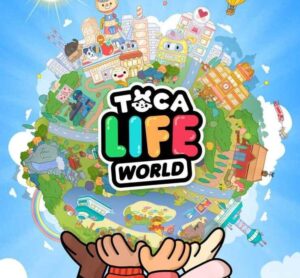From Payouts to “Brainrot”: Is Fortnite’s Creative Mode Monetization a Gamble?
Popular Now
 God of War Ragnarök
God of War Ragnarök
 Counter-Strike 2
Counter-Strike 2
 Genshin Impact
Genshin Impact
 Free Fire
Free Fire
 EA SPORT FC 25
EA SPORT FC 25
 The Legend of Zelda
The Legend of Zelda
 Fortnite
Fortnite
 Call of Duty
Call of Duty
 R.E.P.O
R.E.P.O
 Among Us
Among Us 
In a significant and much-debated move, Epic Games has announced a new monetization system for Fortnite Creative Mode, allowing creators to sell in-game items directly from their custom-built islands. This change, which takes effect in December, opens up a new and potentially lucrative revenue stream for developers, offering a more direct path to profit than the existing engagement payout model. However, this shift raises a crucial question: What kind of content will this new system incentivize? Will it reward truly creative, high-quality experiences, or will it simply supercharge the proliferation of low-effort, addictive “brainrot” games that already dominate the discovery feed, such as the widely popular “Steal A Brainrot”?
 The Promise of a New Creative Economy
The Promise of a New Creative Economy
Since the launch of the Island Creator & Engagement Program, Fortnite has paid out over $722 million to creators. This program, which allocates a percentage of the game’s revenue based on player engagement, was a revolutionary step for user-generated content (UGC). The new system takes this a step further, offering creators a direct line to their player base’s wallets. For a limited time, developers will receive 100% of the V-Bucks value from sales on their islands, a percentage that will drop to 50% in 2027. This move is a clear shot across the bow at competing platforms like Roblox, as Epic has been quick to point out that their new payout model is significantly more generous. This is a massive opportunity for independent developers to build sustainable careers and create more ambitious projects within the Fortnite ecosystem. The ability to sell durable and consumable items, from cosmetic armor to power-ups, gives creators a powerful new tool to monetize their work and reinvest in their creations.
 The Rise of “Brainrot” and the Discovery Problem
The Rise of “Brainrot” and the Discovery Problem
However, the new monetization system comes with a significant risk. The most popular islands in Fortnite Creative are often not the ones with the most detailed graphics or innovative gameplay. Instead, they are the low-effort, “tycoon” or “idle” games, often referred to by players as “brainrot.” These games, like the viral “Steal A Brainrot,” are designed to be simple, addictive, and infinitely replayable. The gameplay of “Steal A Brainrot,” for example, revolves around a cycle of buying “brainrots” from a conveyor belt, which then generate money, and using that money to buy better “brainrots” while also trying to steal other players’ gains. The content is often uninspired, using a mix of copy-pasted mechanics and popular meme characters, but the monetization loop is incredibly effective. The game is designed to be as “sticky” as possible, with players constantly returning to earn more money, to collect all the rare items, or to participate in live events that offer a chance at a “Brainrot God.”
With creators now able to sell items directly, the question becomes: will this new system reward the creators of these “brainrot” maps, and will it incentivize the creation of more of them? The current engagement model already favors these types of experiences due to their high player counts and long playtimes. The new monetization system could exacerbate this problem, turning the Fortnite Creative ecosystem into a race to the bottom, where creators prioritize the creation of addictive, low-effort content with aggressive monetization hooks over genuinely original and creative experiences. The fear is that the discovery page will be flooded with these types of games, making it even harder for new, innovative creators to get noticed.
The Balancing Act: Quality vs. Profit
Ultimately, the success of this new system will hinge on Epic Games’ ability to find a balance. While it’s important to give creators a clear and fair way to monetize their work, it is equally important to maintain the integrity of the platform. Epic has recently made efforts to improve the discoverability of high-quality content, and they are adding a “Sponsored Row” in the discovery menu, which will allow creators to pay for increased visibility. This, too, has been a point of contention, with some arguing that it will simply reward the creators with the deepest pockets. The coming months will be a crucial test for Fortnite Creative Mode. Epic has a powerful new tool at its disposal, one that could either unlock an unprecedented era of creative expression or simply lead to a sea of “brainrot” that puts profit above all else. What players want is a platform that rewards both creative vision and commercial success. The question is, can Epic deliver both?









 The Promise of a New Creative Economy
The Promise of a New Creative Economy The Rise of “Brainrot” and the Discovery Problem
The Rise of “Brainrot” and the Discovery Problem